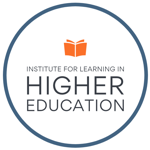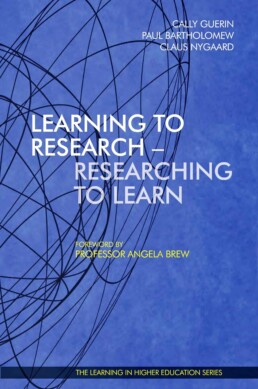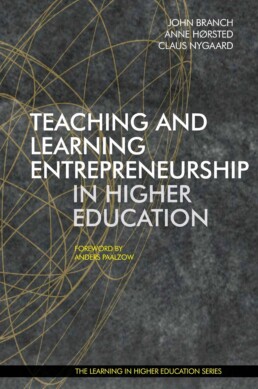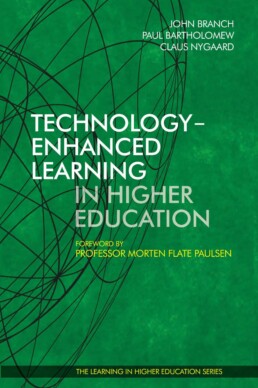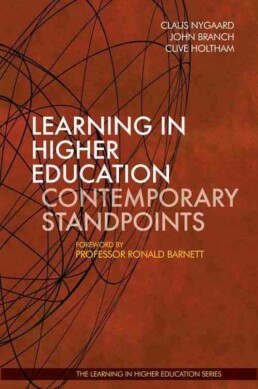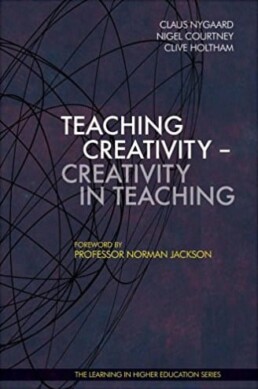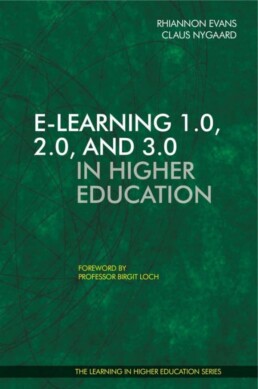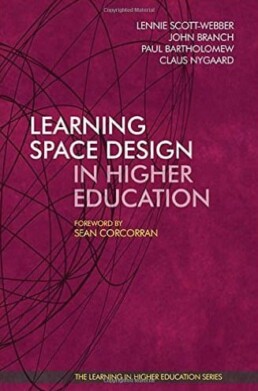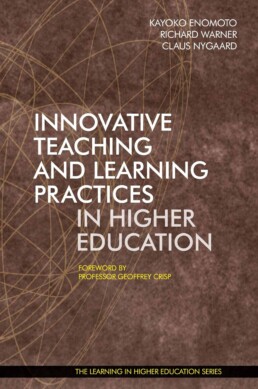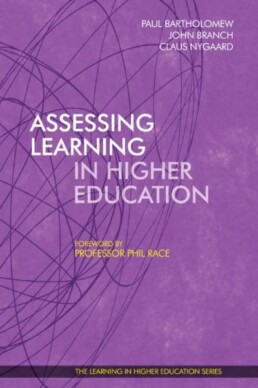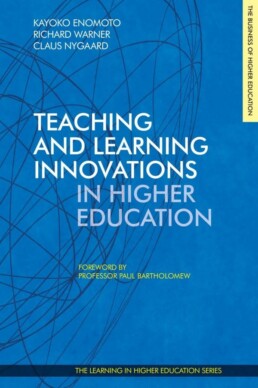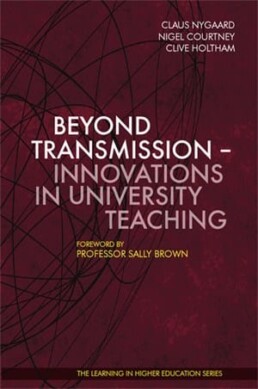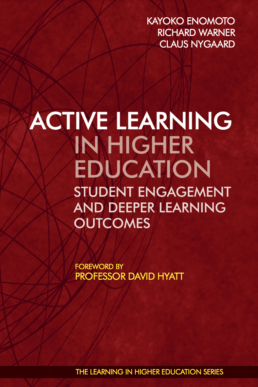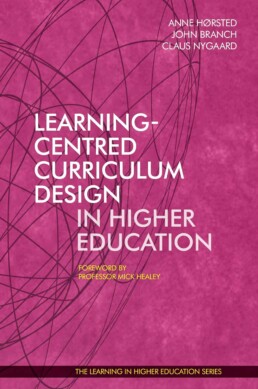Description
Quality Enhancement of University Teaching and Learning
-
Are you a faculty member engaged in quality enhancement of university teaching and learning?
-
Are you an administrator documenting the quality of your university’s teaching and learning deliveries?
-
Are you a manager responsible for the quality enhancement of your university’s teaching and learning?
Then this book will be of value to you. Read it to learn how faculty, administration, and management at universities worldwide engage in the quality enhancement of university teaching and learning.
Pages: 280
Published: 2013
ISBN: 9781909818125
About the book
The challenge addressed by the international scholars and academic practitioners contributing to Quality Enhancement of University Teaching and Learning is how best to enhance university teaching and learning quality, thereby generating a culture of quality in Higher Education. The book focuses on approaches to Quality Enhancement (QE), a process that has significant differences to the interrelated concept of Quality Assurance (QA), particularly concerning aspirations for change.
The contributors believe that the status quo is no longer a viable option if Higher Education’s role as a fundamental part of the knowledge (and wider) economy is to be safeguarded. Believing that the primary purpose of every institution’s quality enhancement work should be the improvement of students’ learning experiences, they argue that innovative QE initiatives offer better ways of handling students’ intricate learning processes than does a focus on QA paradigms.
HEIs need to establish quality enhancement frameworks that focus explicitly on the relationship between learning and teaching and students’ learning outcomes. All institutions need to follow approaches that seek out and value novel and effective practices and disseminate these where appropriate. Focusing on the dynamic and complex processes and relations that create their learning environments is necessary if HEIs move from ‘cultures of compliance’ to ‘cultures of enhancement’. When successful, the outcome should be a culture where ownership of the institutional quality enhancement agenda extends down to the point of delivery.
Since successful QE initiatives must always involve the student, the teacher, and the institution, the book’s three sections address QE’s practice concerning each of these constituencies jointly. Examples of quality enhancement in higher education from Australia, Belgium, Denmark, England, Finland, Iceland, Portugal, Scotland, and the United Arab Emirates are presented. Each section starts from contributions offering micro-level approaches and progressing to those offering macro-level perspectives.
About the Editors of Quality Enhancement of University Teaching and Learning
Claus Nygaard is Professor and Executive Director of the Institute for Learning in Higher Education, Denmark. He is Executive Director of the research-based consultancy company, cph:learning, Denmark.
Nigel Courtney is Honorary Senior Visiting Fellow at Cass Business School, City University London, UK and Visiting Fellow at the University of Technology, Sydney.
Paul Bartholomew is Vice-chancellor at Ulster University, Belfast, Northern Ireland.
Chapters in the book
Foreword by Professor John Biggs (pp. vii-ix).
Chapter 1: Theoretical and Empirical Perspectives on Quality Enhancement in Higher Education. By Claus Nygaard, Nigel Courtney and Paul Bartholomew (pp. 1-18).
Chapter 2: Students Constructing the Curriculum – An Experiment to Increase Responsibility. By Marja Mäensivu, Tiina Nikkola & Pentti Moilanen (pp. 19-36).
Chapter 3: Differentiated Assessment Activities: Customising to Support Learning. By Swapna Koshy (pp. 37-50).
Chapter 4: Independent Studies in Higher Education: Great Expectations or Hard Times? By Andrew Green (pp. 51-68).
Chapter 5: Enhancing Music Students’ Learning and Pedagogic Understandings through Cultural Exchange. By Jennifer Rowley and Peter Dunbar-Hall (pp. 69-86).
Chapter 6: Developing Undergraduate Students’ Generic Competencies through Research Activities. By Isabel Huet, Ana Vitória Baptista & Carla Ferreira (pp. 87-102).
Chapter 7: Using Computer-Supported Collaborative Learning to Enhance the Quality of Schoolteacher Professional Development. By Andrea Raiker (pp. 103-122).
Chapter 8: Quality Enhancement through the Peer Review of Teaching for Learning and Learning for Teaching – a Process and an Outcome. By Christopher Klopper and Steve Drew (pp. 123-144).
Chapter 9: Quality Attributes and Competencies for Transformative Teaching: a Theory of the Transformative Teacher. By Sigrídur Halldórsdóttir (pp. 145-162).
Chapter 10: Enhancing the Enhancers: Action Research as a Quality Enhancement Tool. By Lesley Lawrence and Helen Corkill (pp. 163-180).
Chapter 11: Course Evaluation Systems for Open-ended Quality Enhancement. By Jesper Piihl and Jens Smed Rasmussen (pp. 181-198).
Chapter 12: Quality Enhancement through Student Engagement. By Paul Bartholomew, Stuart Brand and Luke Millard (pp. 199-216).
Chapter 13: A Comparison of Two Learning and Teaching Centres in the E.U. Area: Strategies for Quality Enhancement of Teaching and Learning. By Lorenzo Vigentini and Laurent Ledouc (pp. 217-238).
More about the chapters in the book
Section one of Quality Enhancement of University Teaching and Learning deals with QE concerning students.
In chapter 2, Marja Mäensivu, Tiina Nikkola and Pentti Moilanen offer a Finnish perspective. They say: “In supervisory situations where students have a more equal role with educators, students can see themselves as an active agent and controller of their own learning, and that enables them to take more responsibility for their studying.”
In chapter 3, Swapna Koshy offers a UAE perspective. In her own words: “My chapter evaluates the benefits of using differentiated assessments to enhance the learning experience of tertiary students. Multiple modes of assessments in the form of role plays, videos, letters to the editor, production of a career guide, blogs, posters, and games are demonstrated to cater to the students’ varied skills and tastes.”
In chapter 4, Andrew Green offers an English perspective. He says about his chapter: “Students commence their courses with established personal expectations about independent studies. Lecturers in higher education need to use these subjective expectations to build and challenge students’ abilities and repertoire as independent learners to enhance the quality of teaching & learning.”
In chapter 5, Jennifer Rowley and Peter Dunbar-Hall offer an Australian perspective. “We explore music students’ learning through the lens of a different culture’s learning and teaching practice. The two main quality enhancement mechanisms that allow this to happen are experiential learning and immersion in diverse learning environments,” they say.
In chapter 6, Isabel Huet, Ana Vitória Baptista and Carla Ferreira offer a Portuguese perspective. They say about their chapter: “Undergraduate students’ learning is enhanced by engaging them in research activities. These enable them to develop generic competencies which impact on and enhance their learning.”
In chapter 7, Andrea Raiker offers an English perspective. She says: “My chapter explores using blended physical/virtual communities of enquirers as a methodology for teachers to organise and generate their own enlightenment to develop and focus their professional identities and their power to influence high-level educational change.”
Section two of Quality Enhancement of University Teaching and Learning deals with QE concerning teachers.
In chapter 9, Christopher Klopper and Steve Drew offer an Australian perspective. They say: “Quality enhancement through the peer review of teaching for learning and learning for teaching – a process and an outcome.”
In chapter 10, Sigridur Halldorsdottir offers an Icelandic perspective. She tells about her chapter: “The quality attributes of the transformative teacher are presented and discussed in the form of a synthesised theory. The theory can be used in teacher education and training, in teachers’ self-assessment, and dialogues between teachers (e.g. as part of teachers’ enhancement).”
Section three of Quality Enhancement of University Teaching and Learning deals with QE concerning institutions.
In chapter 10, Lesley Lawrence and Helen Corkill offer an English perspective. They reflect on their chapter: “Our chapter shows how the introduction of action research into a postgraduate certificate in academic practise helps to develop a quality culture. This is achieved by supporting and empowering inexperienced teaching staff to change practice using evidence-informed approaches, thus enhancing the enhancers.”
In chapter 11, Jesper Piihl and Jens Smed Rasmussen offer a Danish perspective. “Course evaluation systems (CSE) can serve not only the purpose of quality control but also enhancement. We discuss a case on how design and style of use of a CSE can create multiple arenas for discussions on quality enhancement, making stakeholders able to take responsibility,” they say.
In chapter 12, Paul Bartholomew, Stuart Brand and Luke Millard offer an English perspective. About their chapter, they explain: “Three discrete projects are used to illustrate an institutional response to quality enhancement. A partnership with students delivers a sense of belonging and enhances student success. This is compatible with enhancing the student engagement dimension of the process variable of academic quality.”
In chapter 13, Lorenzo Vigentini and Laurent Ledouc offer a Belgian and a Scottish perspective. They comment on their chapter: “Quality enhancement is considered part of two European learning and teaching centres’ strategic activities. Despite significant differences in their context and strategic approach, there are similarities which reveal the effectiveness of such centres in affecting teaching and learning, ultimately enhancing students’ learning experience.”
